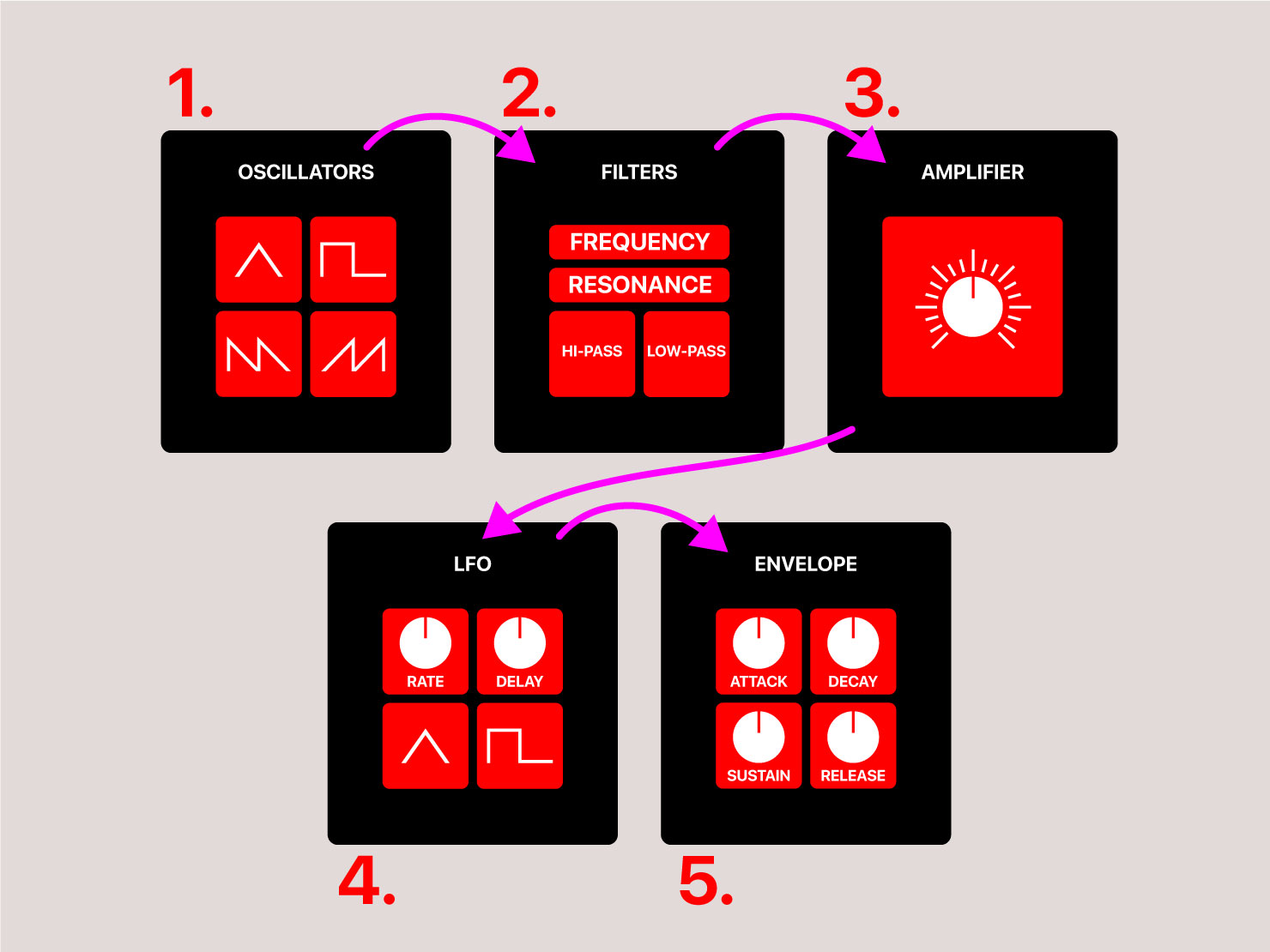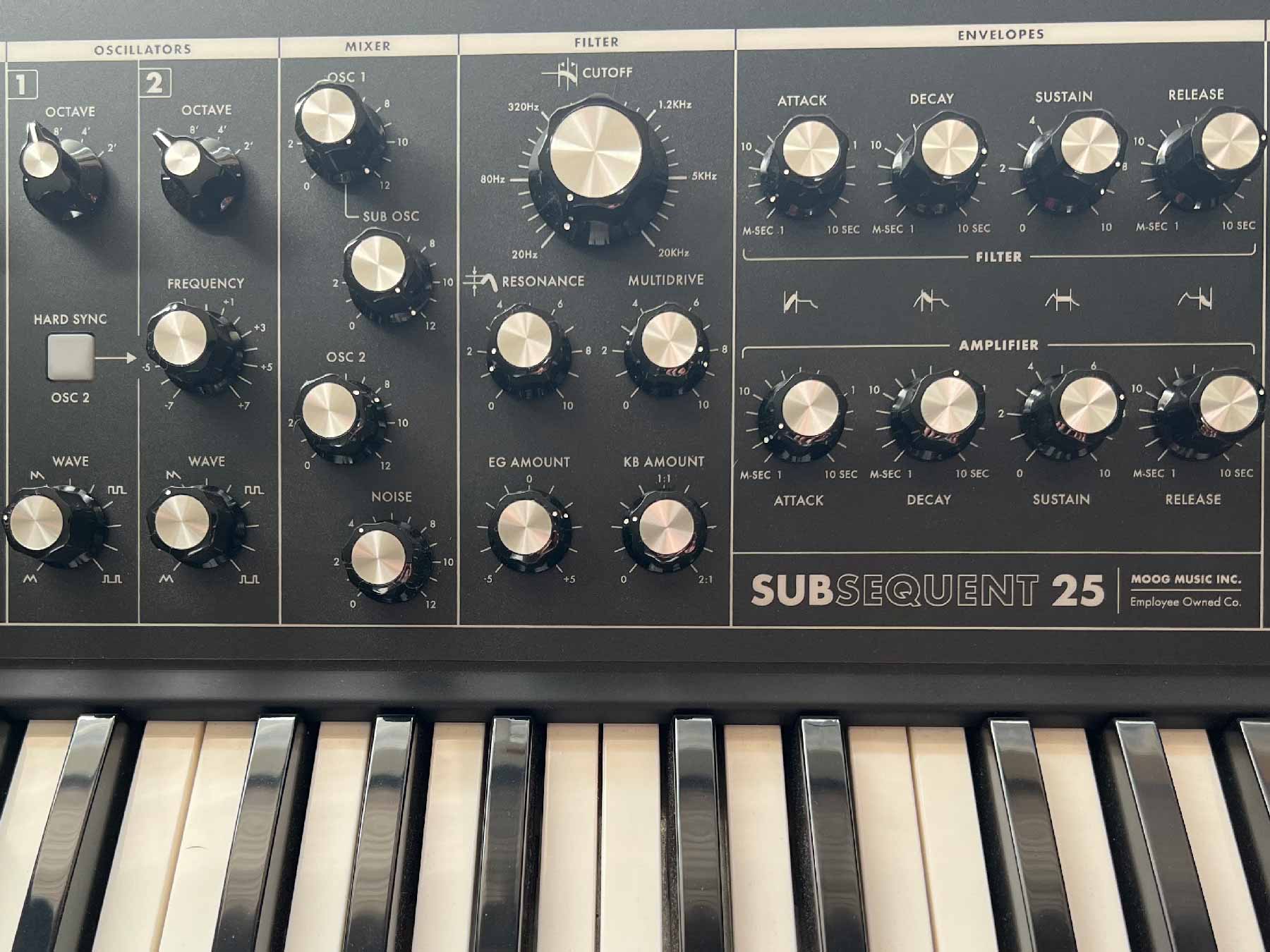What is Subtractive Synthesis?
Subtractive synthesis is a method of sound creation that was popularized by synthesizers from the 60’s and 70’s. Today, this method is by far the most popular method for sound creation in synthesizers and is an important process to learn and understand when creating sound on any synthesizer. The basic principal of subtractive synthesis is to begin with a raw complex sound wave like a sawtooth or square wave. Next, the sound is crafted to be a more detailed and polished sound by removing (or subtracting) frequencies from that raw sound.
The removal of frequencies is typically done with things like filters and envelopes. The filtered sound typically goes through an amplifier and final tweaks to the sound can be made with additional sound sculpting modules like LFOs (low frequency oscillators.) Subtractive synthesis differs from additive synthesis, which can be understood as a method of sound creation by combining simple waveforms to create more complex sounds.
Examples of Subtractive Synthesis
One example of subtractive synthesis is the use of a synthesizer to create a sound similar to that of bass and snare drums. Both sounds could be created by first using a synthesizer’s noise (white noise). For a bass drum, the noise would go through a low-pass filter to remove the higher frequencies from the waveform. An envelope would be used to make the initial sound have a high attack, and little to no sustain. For a snare drum, the noise might go through a high-pass filter to remove the lower frequencies. The result would be a brighter sounding noise. Finally this would also go through an envelope to cut out sustain and create a quick attack, like a drum head getting struck.

Illustration of Subtractive Synthesis
To further explain subtractive synthesis, take a look at this illustration. It helps to show how the sound begins as a raw sound wave from the oscillator. The oscillator step prepares the pitch of the sound and a raw, complex sound wave. Next, the sound goes through a filter where the tone is established. After the initial filtering, the sound goes through an amplifier. This step helps sets the volume of the subtractive sound as it has lost some frequencies from the filter stage. Next, the sound travels through the LFO’s. This stage allows further modulation of the sound and offers the opportunity to further define what has been shaped. The last stage is through the envelope generator. At this stage, things like attack, decay, sustain, and release are defined. This is the basic sound generation path of subtractive synthesis and is still popular in most synthesizers today!
